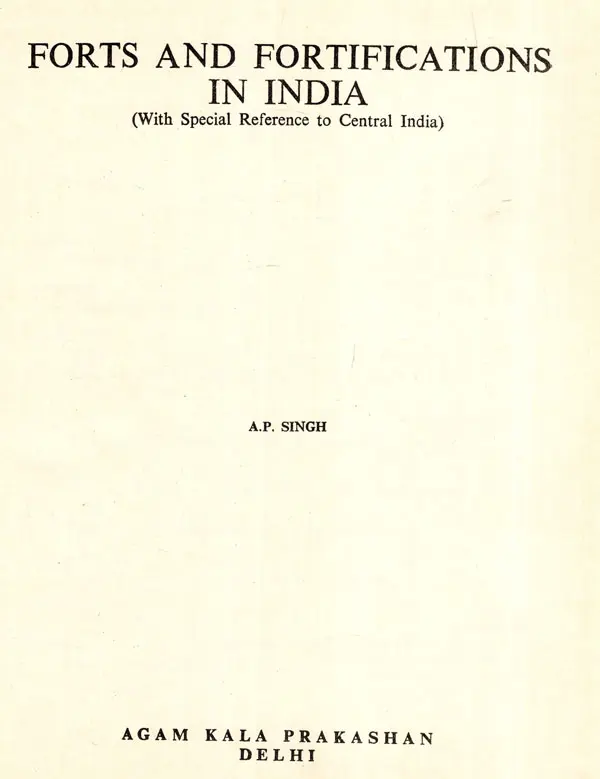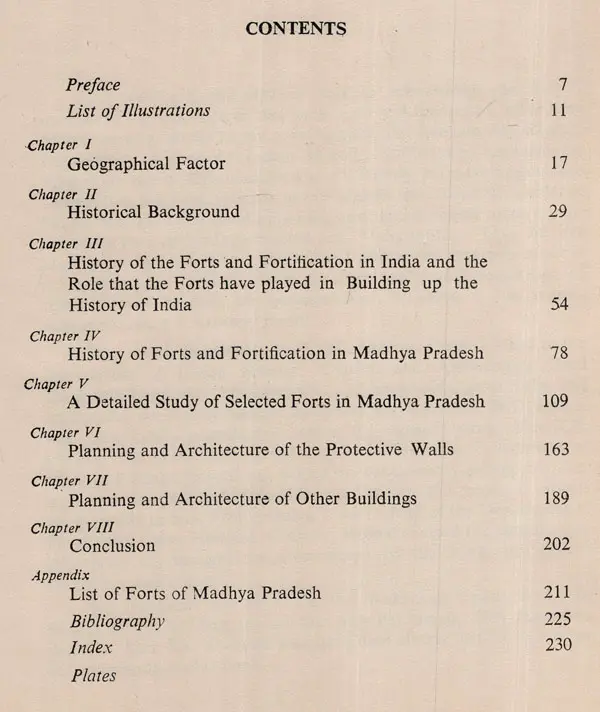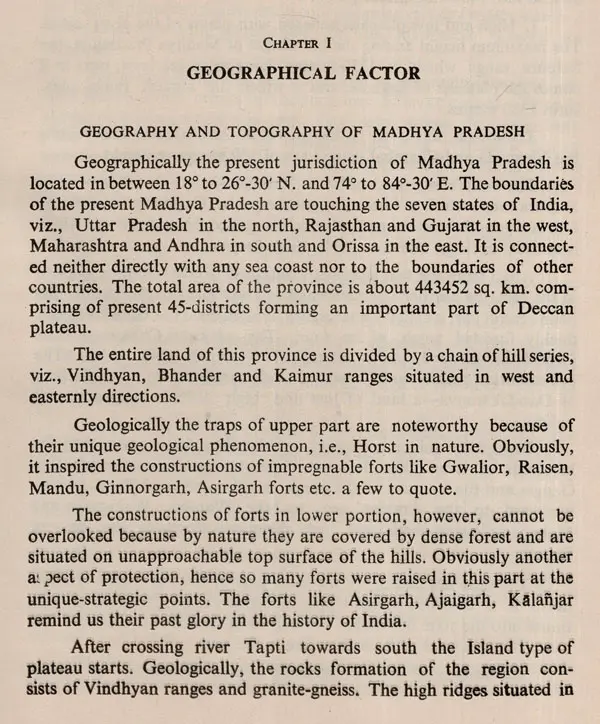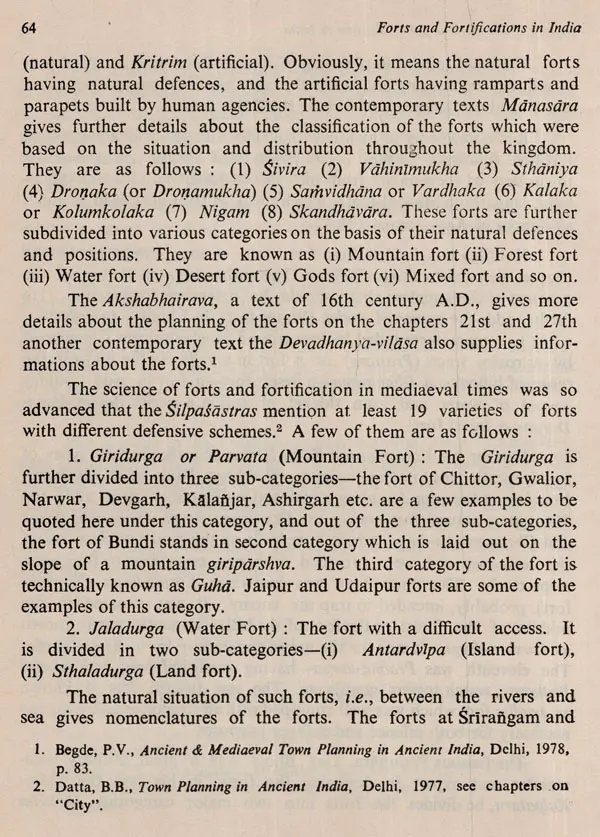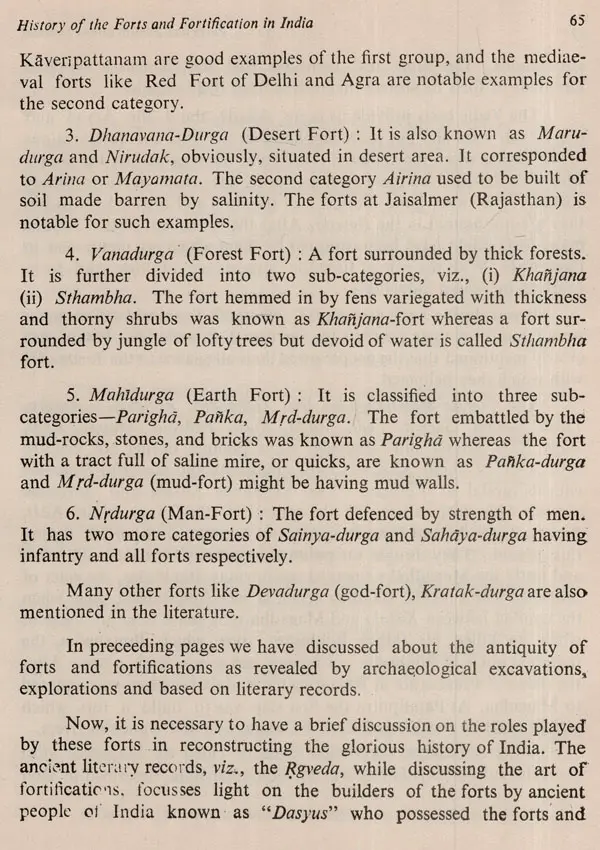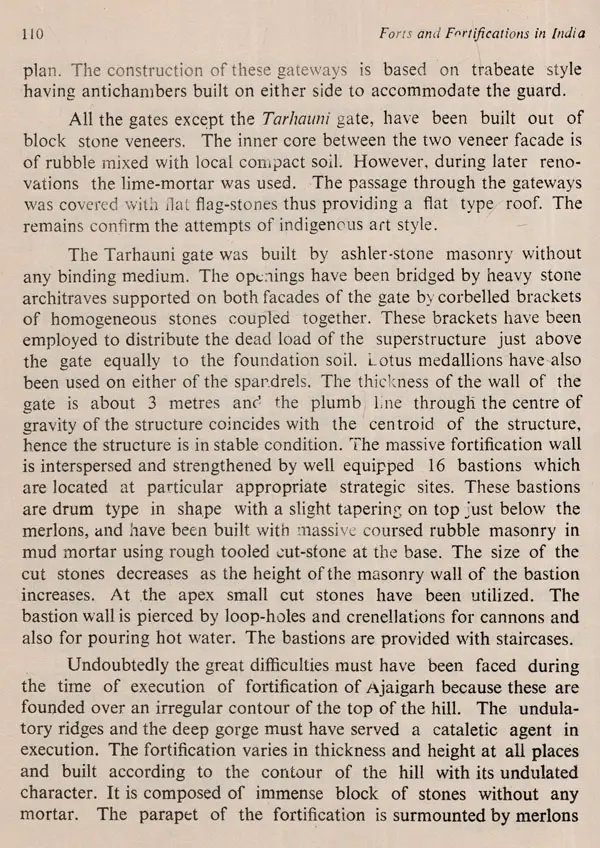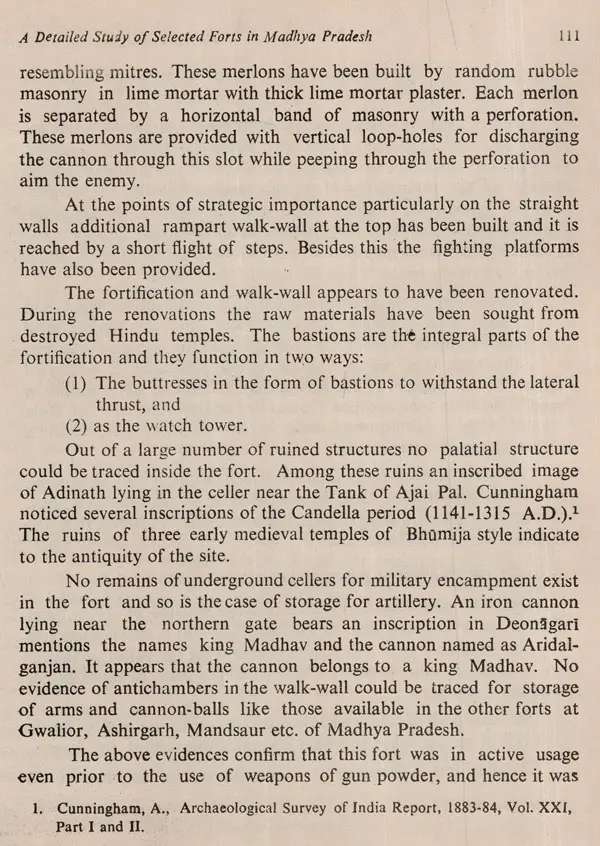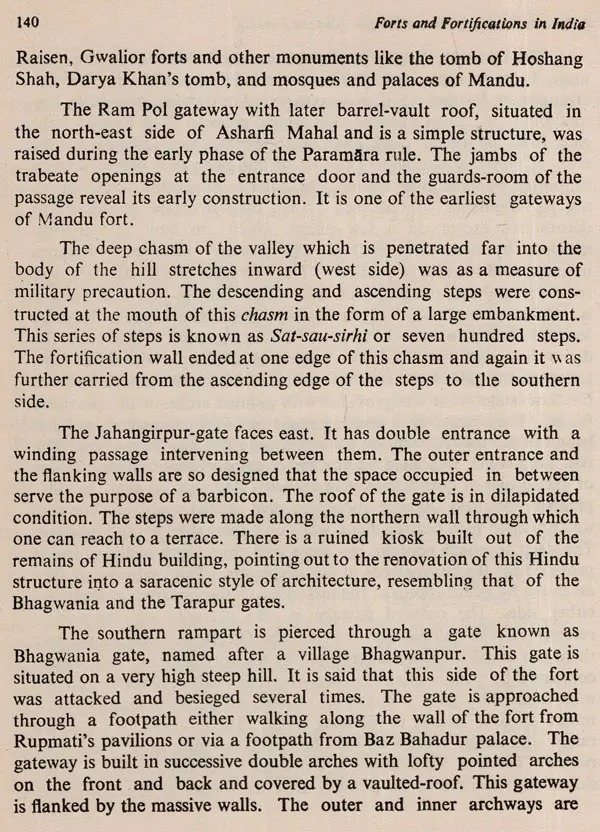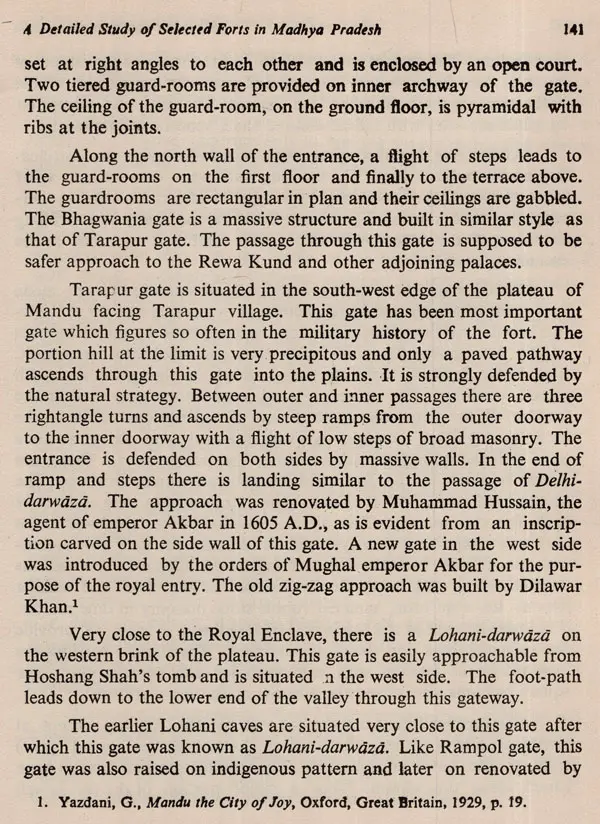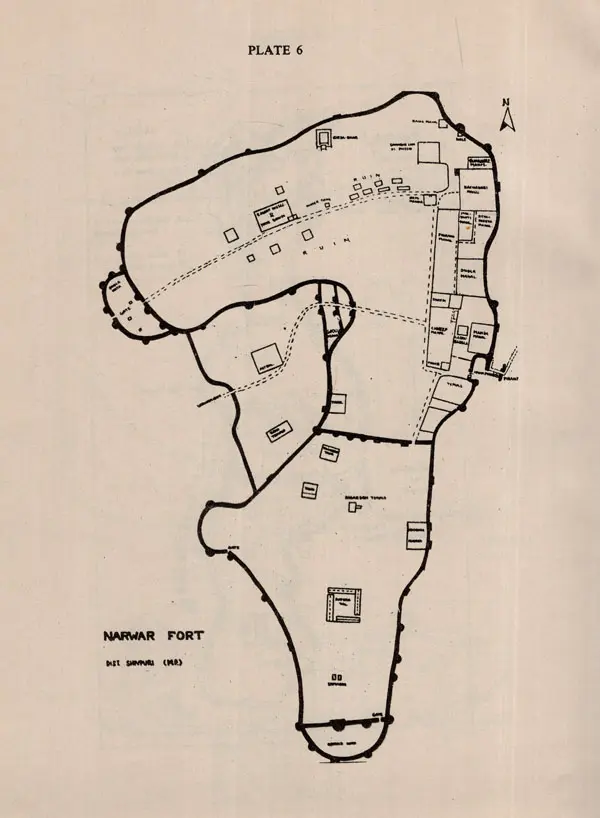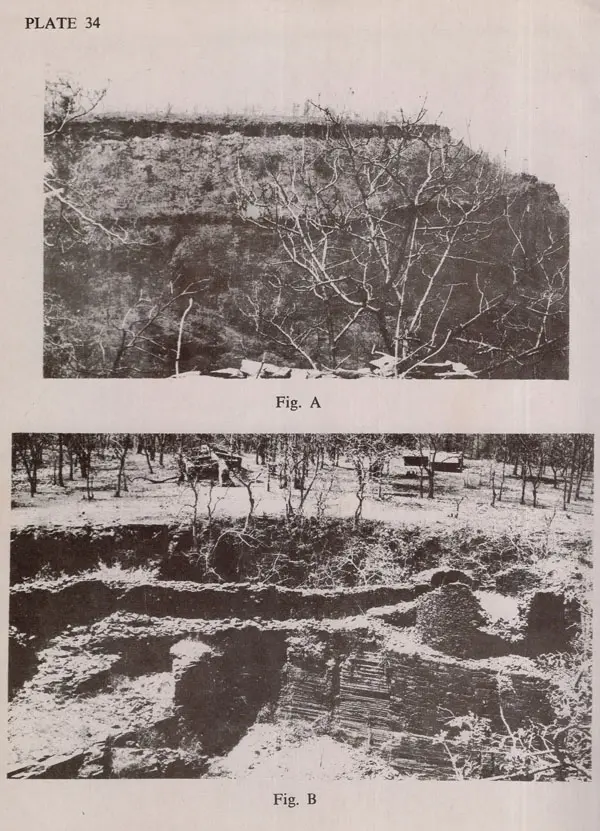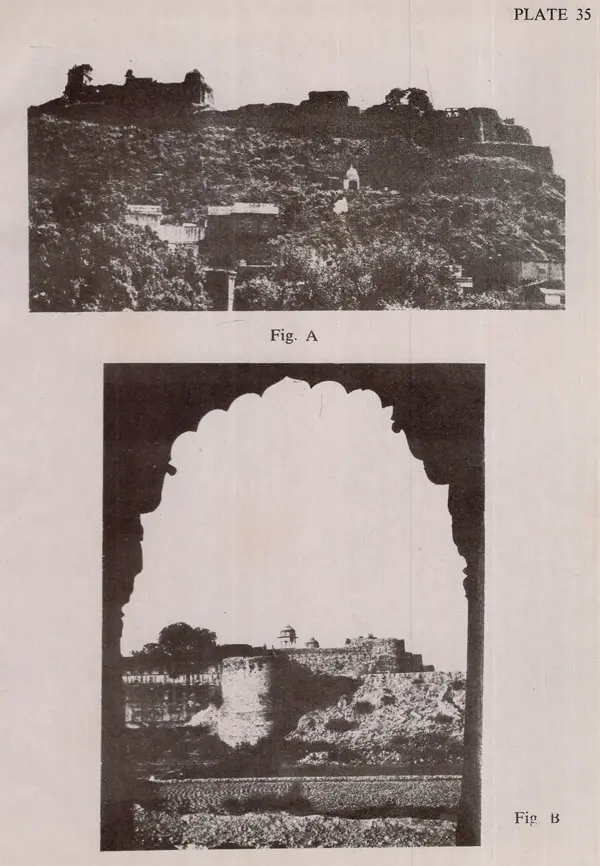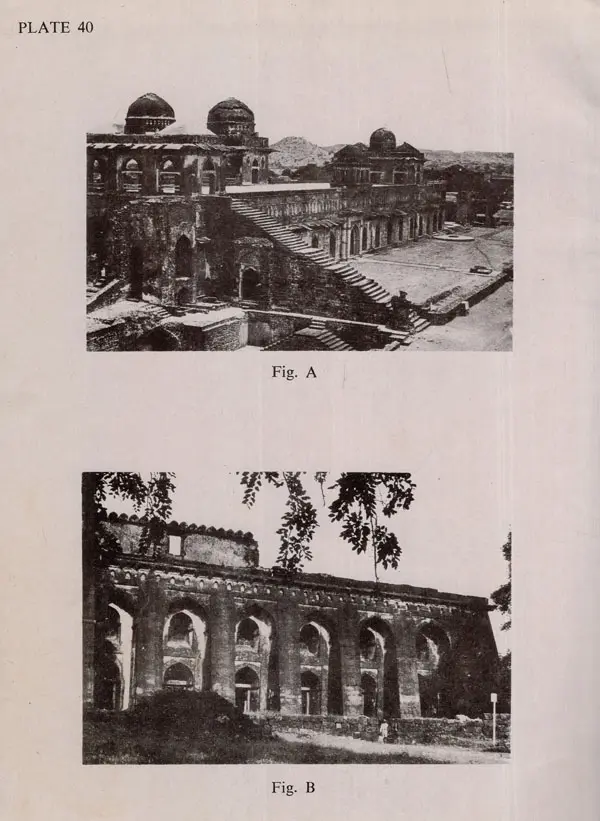
Forts and Fortifications in India (With Special Reference to Central India) (An Old and Rare Book)
Book Specification
| Item Code: | UAP186 |
| Author: | A.P Singh |
| Publisher: | Agam Kala Prakashan, Delhi |
| Language: | English |
| Edition: | 1993 |
| Pages: | 266 (Throughout B/w Illustrations) |
| Cover: | HARDCOVER |
| Other Details | 10.00 X 7.50 inch |
| Weight | 690 gm |
Book Description
Forts and fortifications are primarily of military expediency Right from the protohistorie Harappan times to the modern times, these have been cons tructed. Yet it is only during the medieval period of India's history we see a proliferation of forts; a need of the times when conflict for supremacy was rampant. The design and architecture of forts and fortifications are governed by the topo graphy of the region, berides the strategic importance like, commanding the supply route, approach, etc.
The present book dealing with the forts of Madhya Pradesh, where incidentally these are concentrated, is a comprehensive and cogent narration of the history and development of defence architecture, planning, execution etc. Here for the first time a comparative study of forts and their appurtenances have been made. A fort by itself is complete unit, and should be able to sustain its occupants during times of emergency. It should, besides enclosing royal palaces and apart ments for the people who matter should have means for longer sustenance for which essentials like water supply, food, etc. should be stored and made available. All these aspects are dealt with in this book. An analysis shows that the defence architecture has followed the traditional norms detailed in ancient texts; however those regarding the palaces have not been adhered to in a few cases, perhaps due to the needs of changing times.
The book is divided into several chapters; dealing with the geography and topo graphy of the region, historical back ground, a brief history of forts and fortification in India in general and that of those in Madhya Pradesh in particular. One chapter describes in detail ten important forts and fortifications in the region eg Chanden, Narwar, Gwalior, Mandu, Raisen, Asirgarh, etc. This extensive study contributes much to military architecture of the medieval times. Two more chapters highlight the importance of planning and architecture of protective walls as also the auxiliary buildings inside the fort.
The study has revealed that Kautilyas postulation regarding location of forts have not been followed in view of the peculiar geographical and topographical factors of Madhya Pradesh.
The work has been very well illustrated with numerous ground plans of several forts, citadels, etc. beginning from the protohistoric onwards. A number of photographs add to the pictorial value of the book.
Dr. Ajai Pal Singh was born in 1933. He graduated in Science from Allahabad University in 1955 and received diplomat in Civil Engineering from LT.C. Engi neering College, B.H.U., Varanasi in 1958. He took his M.A. degree from Vikram University, Ujjain in 1965 and completed his Post-graduate diploma in Museology from Bhopal University in 1973 with first division and first position in the faculty. He was awarded Ph.D. degree from Bhopal University in 1985.
Dr. Singh is at present employed as an Assistant Engineer (Conservation) in the Directorate of Archaeology & Museums, Govt. of Madhya Pradesh, Bhopal. As an engineer by profession, Dr. Singh has been practically handling the conservation work of monuments and antiquities almost single handed for the last two decades besides his thorough experience in the field. Besides the book Conserva tion and Museum Techniques, Dr. Singh has also contributed nearly half a dozen. research papers to various reputed journals.
It is my sacred and pleasant task to acknowledge the help I received in the execution of this book. First and foremost I record my deep sense of gratitude to my revered guru Dr. Rehman Ali, Reader, Department of Ancient Indian History, Culture and Archaeology, Vikram University, Ujjain, under whose scholarly, pains taking guidance I completed this book. He has not only given me scholarly guidance but also accompanied me during field work and surveyed some of the important forts of Madhya Pradesh and Maharashtra. Thus he has literally brought me up in various aspect of study of monuments. It is a commendable Indian custom to start one's work with a sign of respect to one's teacher. My guruvandanam, however, is not merely mangalartham, it is sincerely meant.
I am deeply indebted to Prof. R.K. Sharma, Dean & Head of the Department of Indian History, Culture and Archaeology, Rani Durgawati University, Jabalpur, who had been of a great help and encouraged me for my higher studies and also Late Shri M.D. Khare, who very kindly permitted to persue the research work. Shri K.K. Chakravarty, Director of Archaeology and Museums, Government of Madhya Pradesh, Bhopal has helped me considerably during my field work and also provided all facilities to complete this book. I express my gratitude to him. Prof. Shankar Tiwari, Head of the Department of Geography, Govt. Hamidia College, Bhopal, helped me considerably in refining my thoughts for presentation of the book, my sincere thanks are due to him.
My thanks are also due to Dr. V.S. Wakankar, Ujjain, Shri C.B. Mishra, Shri L.K. Gaur, my son Shri Shiv Pal Singh, Shri Jagmohan Saraswat, Shri S.K. Dwevedi who have been always helpful to me for the completion of this book.
Book's Contents and Sample Pages
